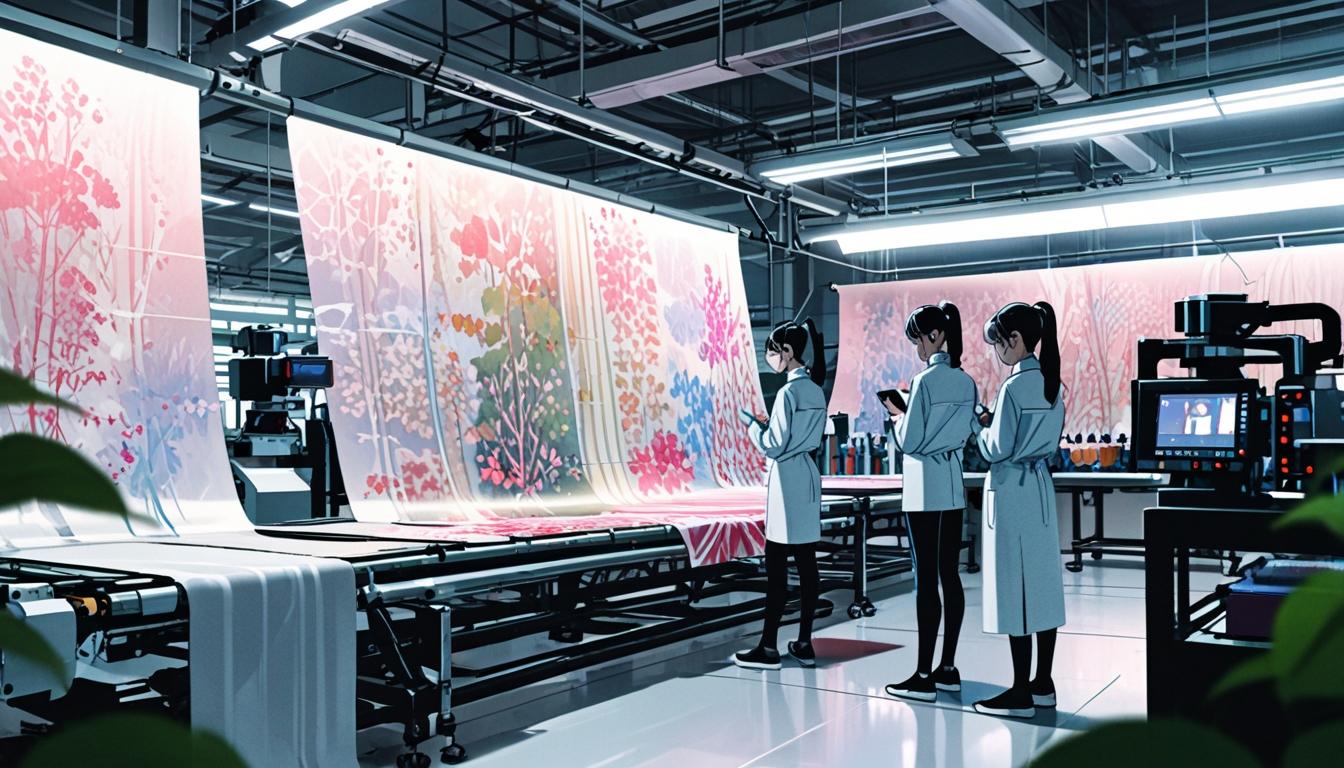The fashion sector generates massive waste and emissions, but startups like Portugal’s Smartex are using AI technology supported by Amazon Web Services to detect fabric defects early, reduce waste, and promote sustainability in production.
The accelerating climate crisis has highlighted the urgent need to address waste and sustainability across various industries, with the fashion sector standing out as a significant contributor. The global fashion industry generates an estimated 92 million tons of waste annually, equating to roughly one dump truck of discarded material every second, according to Lisbeth Kaufman, Head of Climate Tech Startups at Amazon Web Services (AWS). Much of this waste arises from defective fabrics that never reach consumers, underscoring inefficiencies in textile production.
In response to these challenges, AWS has launched initiatives aimed at fostering innovative climate technologies to reduce environmental impact within fashion and related sectors. One notable program is the Compute for Climate Fellowship, designed to fund and support startups developing cutting-edge solutions to mitigate the climate crisis. Kaufman, speaking to Built By Girls, emphasized the fellowship’s broad goal: “Our goal broadly is to help climate tech startups grow and succeed.”
A prominent example of such innovation is Smartex, a Portugal-based deep-tech company leveraging artificial intelligence (AI) to revolutionize textile manufacturing. Co-founder and CEO Gilberto Loureiro explained that one major source of textile waste stems from defects detected during fabric production that often necessitate discarding entire batches. To address this, Smartex has developed a sophisticated camera system equipped with multiple lighting technologies—including ultraviolet, white, and infrared lights—that captures hundreds of millions of fabric images from various angles. These images feed AI models trained to detect even minor defects, enabling real-time alerts or machine stoppages to prevent fabric waste at the source.
Loureiro detailed the technological scale involved: “We collected billions of images to our databases. We use many of them to train powerful artificial intelligence algorithms.” AWS supports Smartex by providing the necessary computing infrastructure for data collection and ongoing AI model training, ensuring the system continually improves its defect detection capabilities.
Beyond Smartex, the AWS fellowship backs other climate technology ventures with distinct environmental focuses. For instance, Canadian company Xatoms employs AI to identify molecules capable of purifying water using only sunlight, presenting potential solutions to water scarcity issues. Another startup, Hume AI, develops generative AI models to monitor and forecast the health of natural ecosystems worldwide, aiding conservation efforts.
Kaufman highlighted the economic as well as ecological benefits of technologies like Smartex’s, noting, “They have created a technology that helps their customers save money. So in addition to helping reduce waste, their customers are gonna buy this because they need to save money and improve on their efficiency.” By addressing defects promptly during production, manufacturers can minimize fabric loss, lowering costs and resource consumption simultaneously.
The environmental impact of fashion extends beyond textile waste. The industry accounts for approximately 10% of global carbon emissions and consumes about 79 trillion liters of water annually, contributing to concerns over water scarcity worldwide. Additionally, discarded textiles are often non-biodegradable, ending up in oceans and food chains, worsening pollution problems.
Artificial intelligence is also applied in other areas of fashion to reduce overproduction and excess inventory, further mitigating waste. By integrating technology-driven solutions throughout the supply chain—from raw material inspection to ecosystem monitoring—these efforts exemplify how AI can play a pivotal role in promoting sustainability.
In summary, AWS-backed startups like Smartex demonstrate how combining advanced AI and robust computing infrastructure can address fashion’s environmental challenges at their origins. The successes of these initiatives highlight the potential for technological innovation to create economically viable and environmentally responsible practices, shaping a future for fashion that prioritizes climate-conscious production and resource stewardship.
Source: Noah Wire Services





Hello,
“Nextail” seems potentially incorrect. You might quickly verify using spelldoc.com.
Thanks,
Eric
Hey there,
“Nextail” seemed off; thought you’d appreciate knowing. I’ve quickly confirmed similar cases with spellhelper.com but I’m sure there are otehr tools as well.
Thanks,
Travis
Nice story. It makes you wonder how much these big fast-fashion players rely on those perks to stay competitive. I personally try to be picky about where I get my clothes, and honestly, sometimes I check stuff out on one hanes place just to see reviews and see where people are actually buying quality pieces. It’s kind of crazy how different experiences can be, even for something as basic as T-shirts or hoodies. Makes me think twice about rushing to grab every trendy drop.